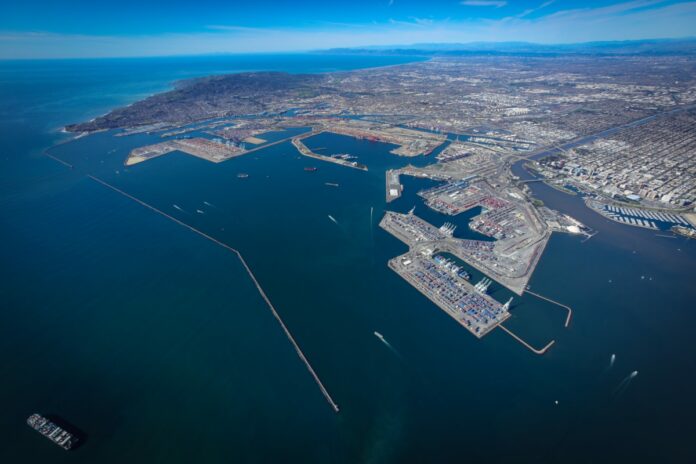Last month, President Joe Biden signed into law the Water Resources Development Act of 2022, which includes the authorization of a $200 million channel-deepening project at the Port of Long Beach.
The project – to be jointly funded and conducted by the U.S. Army Corps of Engineers and the port – widens and deepens several of the channels and basins that make up the port.
This will enable larger ships to navigate through more of the port’s waterways. The size of container ships has been steadily increasing, from about 5,000 20-foot container units in the late 1980s to 8,000 container units by the year 2000 to about 20,000 container units in 2013. A new generation of ships capable of holding up to 24,000 container units has emerged during the past five years. Each jump in size also means deeper keel depths, which requires deepening channels at the ships’ ports of call.
The channel deepening project will also reduce the need to have larger liquid bulk container vessels anchor some distance from the docks and then transfer their cargo to smaller ships.
The resulting faster, more efficient movement of cargo will also reduce pollution.
“This project will widen and deepen the harbor serving one of the world’s top 10 busiest container port complexes,” Mario Cordero, the port’s executive director, said in the port’s announcement of the authorization. “Increasing the safety and efficiency of vessels transiting our waterways supports our mission to remain competitive while reducing pollution from port-related operations.”
The project, which has been in the planning stages for more than eight years, was one of only five port construction projects nationwide to make the authorization cut. In late 2021, the federal Infrastructure Law endorsed the project in concept and designated $8 million in early planning, design and engineering work.
The Army Corps fully endorsed the project last summer. The Army Corps concluded deepening and widening channels in the harbor would lead to improved vessel navigation, safety and national economic benefits valued at more than $15 million annually.
Key elements of the project include:
• Deepening the main approach channel to the port from 76 to 80 feet;
• Easing turning bends in the main port channel to deepen a wider area to 76 feet;
• Deepening parts of the port’s West Basin from 50 to 55 feet;
• Constructing an approach channel and turning basin to Pier J South with a depth of 55 feet;
• Improving the breakwaters at the entrance to Pier J; and
• Depositing dredged material in nearshore sites for reuse or in federally approved ocean disposal sites.
The federal authorization allows the port and the Army Corps to proceed with engineering agreements, detailed planning and budgets, bidding and awarding construction contracts and procuring funding.
Later this year, the Port and Corps are expected to execute a design agreement and initiate the design work. Construction is projected to start in 2027 and take about three years.
According to a Port of Long Beach spokesman, the Port will contribute about $128 million toward the $200 million project; the rest will come from the Army Corps.
“We are grateful to members of the House and Senate and the Army Corps of Engineers who championed this bill, the many lawmakers from both parties who voted for it and President Biden,” Sharon Weissman, president of the Long Beach Board of Harbor Commissioners, said in the authorization announcement. “Their overwhelming support recognizes how vital international trade through the Port of Long Beach is to the U.S. economy.”
The neighboring Port of Los Angeles completed a larger channel deepening project a decade ago. That project, which at the time cost $370 million and took 10 years to complete, deepened that port’s main channel, along with its West and East Basins, from 45 feet to 53 feet. About 15 million cubic yards of material was dredged from these channels and basins; most of that material was relocated to other sites, both within the port and just outside the port.

